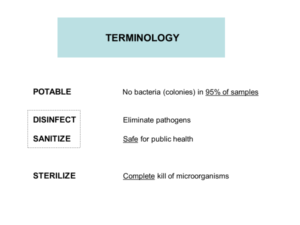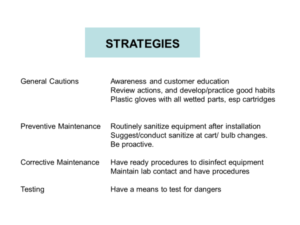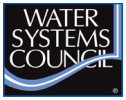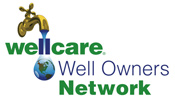In this 5 part series we will discuss a very important and at times overlooked area of residential water treatment, the Disinfection and Sanitization for Residential Water Treatment. The information in this series was prepared by Larry Zinser of Master Water Conditioning. Larry Zinser is a sales engineer with Master Water Conditioning. Following an education with a Bachelor's Degree in Chemistry from Georgetown University, Larry spent 27 years in the Marine Corps before retiring as a Colonel. Since then, Larry has built his career designing, building, teaching and troubleshooting water treatment systems and high purity water applications. His background is in commercial, industrial, and residential applications and he has provided accredited technical courses throughout the country and internationally.
This discussion of disinfection for residential applications will include five steps. First, we will look at the species that pose a threat to human health. Second, we will look at where the threat comes from, and how it can occur and then reoccur. Third, we will look at the overall strategy, which we as service technicians can take to combat and minimize the threat. Fourth, we will then look at the tactics and specific actions which should be taken to combat microorganisms. Finally, we will look at four common installation types, and the practices we can take to win the battle against microbiology.
Part 3: The Strategies
Before we look at strategies to combat microbiology, it is important to understand terminology. As we stated, “potable” water will likely still contains some bacteria. Potable water is not necessarily sterile water. Disinfection and sanitization are generally used in the same manner to mean the reduction of the risk to safe levels for human public health. However, disinfection refers to the process of eliminating pathogenic organisms and sanitization refers to a process of treating and cleaning, leading to a safe microbial condition. Sterilization is the term used to kill ALL microorganisms, but even sterilization is time and environment sensitive.
Our approach to disinfection must include the awareness of just how prevalent and insidious is the threat to infection. Discipline and good habits are essential to minimize the risk of infection especially when handling products which will be exposed to water. Preventive maintenance should be proactive to stay ahead of infection, including routine sanitizing of installed equipment, especially those which will be placed into the water stream. We, as professionals should have the procedures and equipment necessary to react to any apparent attack by microbiological organisms. This should include contact with laboratory facilities to confirm the effectiveness of corrective actions. There are some simple tests to estimate the danger, like heterotrophic plate counts, but professional testing is necessary.











